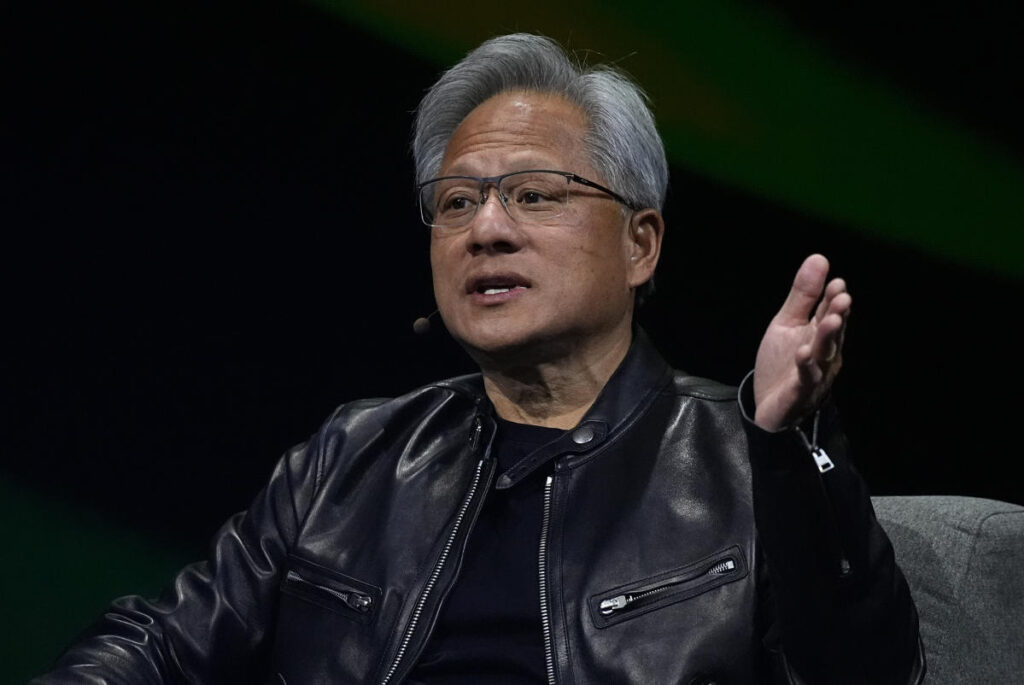Sometimes your best isn’t good enough. That’s the lesson Nvidia (NVDA) learned as the company’s shares fell 3% on Wednesday despite reporting better-than-expected second-quarter profit and third-quarter guidance.
That’s not to say the company’s growth wasn’t impressive: Revenue grew 122% year over year to $30 billion, up from $13.5 billion, and data center revenue, which is all-important to Nvidia, reached $26.3 billion, up 154% year over year.
But it wasn’t the kind of explosive event that investors have rapidly become accustomed to over the past few quarters.
Beyond investor sentiment, Wall Street analysts also seem to have noticed Nvidia’s growth after several quarters of big, unexpected upward revisions.
Nvidia reported revenue on Wednesday that beat Wall Street expectations by 4.1%, the smallest margin since the fourth quarter of fiscal 2023.
Nvidia’s business has grown rapidly over the past two years, and the company’s revenue has beaten Wall Street expectations by double-digit percentage points for three consecutive quarters, including a 22% margin in the second quarter of fiscal 2024.
And with Wall Street seemingly better understanding Nvidia’s growth at this point in the AI investment cycle, questions are also being raised about the status of Nvidia’s next-generation Blackwell chips.
Ahead of the company’s earnings release, The Information reported that the chip, a follow-up to Nvidia’s Hopper series, was facing delays that could affect some of the company’s major customers, including Microsoft and Google.
Nvidia Chief Financial Officer Colette Kress said in quarterly comments that the company has made changes to Blackwell to improve production yields, while CEO Jensen Huang said the chips are now sampling to customers, marking a big step toward shipping the processors in volume.
Hwang said the company expects Blackwell to generate billions of dollars in sales in the fourth quarter, but despite questions from analysts, the CEO could not say exactly how much revenue Blackwell would generate.
But Huang cited several other strengths for Nvidia, including noting that demand for its Blackwell platform far outstrips supply. The CEO also said that Nvidia’s Hopper platform will continue to grow in the second half of the year, explaining that he expects the company’s data center business to grow “quite substantially next year.”
Huang also said that AI inference, where a computer runs an AI program to provide answers to users’ questions, is driving the company’s data center revenue.
The story continues
Nvidia Chief Executive Officer Jensen Huang speaks at SIGGRAPH 2024. (AP Photo/David Zalubowski) (The Associated Press)
This should allay concerns about threats to Nvidia’s long-term growth as companies pivot from training AI models to using them for inference, something Huang seems to believe Nvidia will continue to advance as customers use its chips to both train and run AI models.
Nvidia remains the global leader in AI chips, and it will take some time for rivals AMD (AMD) and Intel (INTC) to catch up with its hardware and software lead. Nvidia’s stock price may fall in the short term, but Wall Street is still keeping an eye on the company.
In an investor note released after Nvidia’s earnings release, Bank of America’s Vivek Arya raised his price target on the chip designer to $165 a share from $150, writing, “Despite the turbulent quarter, we continue to believe in Nvidia. [Nvidia’s] Generative AI adoption is still in its first 1-1.5 year stage and has unique growth opportunities, execution power and a commanding 80%+ market share. [years] An initial investment cycle of at least three to four years is required.”
Raymond James’ Srinivasan Pajuri also raised his price target on Nvidia shares to $140 from $120, writing in an investor note that “Blackwell’s delays are better than feared and management expects strong accretion in the fourth quarter.”
Pajuri also noted that demand for Nvidia’s current generation hopper chips remains strong, and he expects sales to grow in the fourth quarter despite a simultaneous ramp-up in Blackwell’s production.
Morgan Stanley’s Joseph Moore raised his price target on Nvidia to $150 from $144, saying expectations for the company’s stock price after the earnings report are too high.
“Expectations become more challenging as superlatives become more mediocre, but the quarter was still very strong given the transitional nature of the current environment.”
Whether that’s enough to keep investors happy in the next quarter remains to be seen.
Subscribe to the Yahoo Finance Tech newsletter. (Yahoo Finance)
Contact Daniel Howley at dhowley@yahoofinance.com. Follow him on Twitter. Daniel Howley.
For the latest earnings reports and analysis, earnings rumours and forecasts, and company earnings news, click here.
Read the latest finance and business news from Yahoo Finance.



